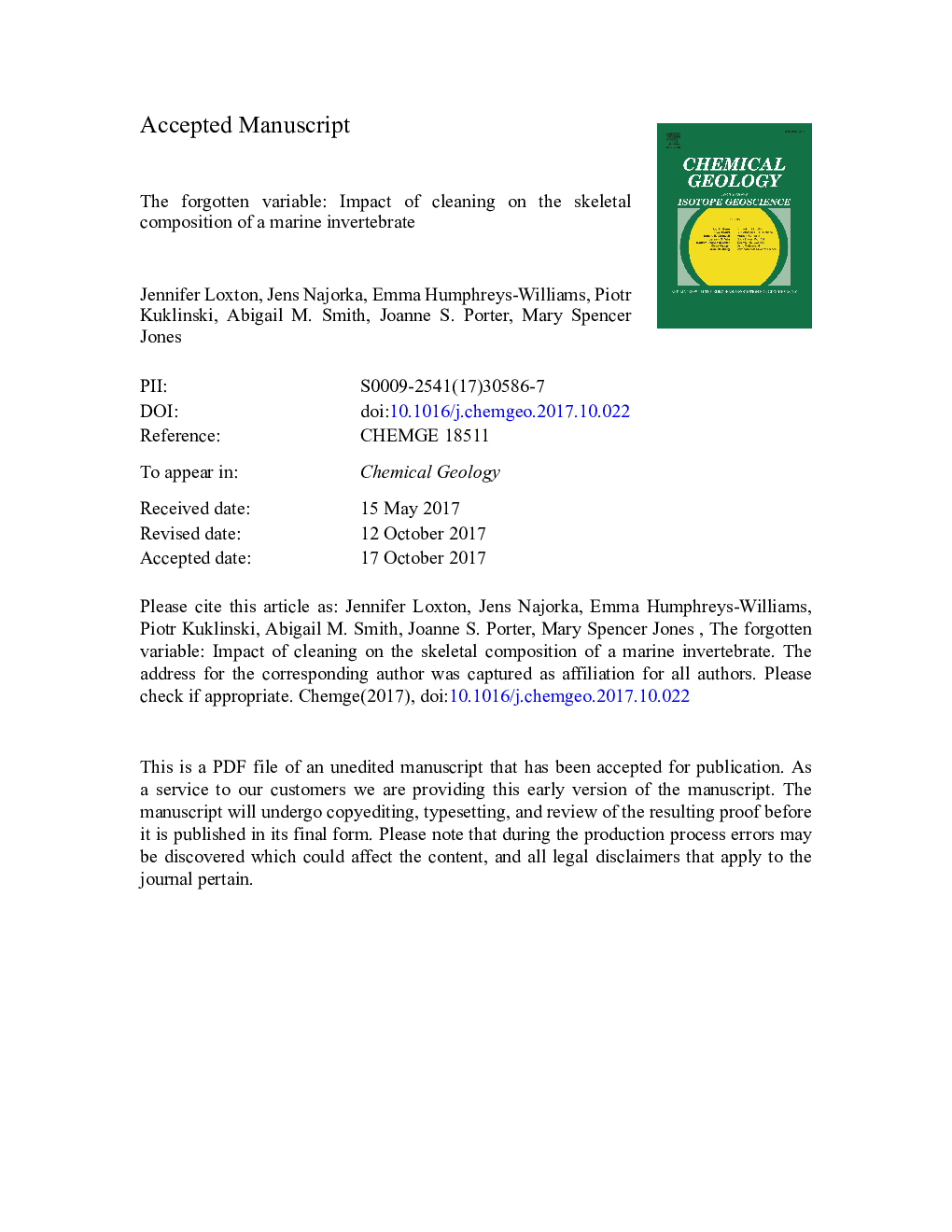| Article ID | Journal | Published Year | Pages | File Type |
|---|---|---|---|---|
| 8910517 | Chemical Geology | 2017 | 39 Pages |
Abstract
For centuries, invertebrate collections have been subjected to various post-collection and curatorial cleaning techniques. Cleaning, however, may damage or even dissolve skeletal calcium carbonate and consequently influence any subsequent geochemical analysis. We investigated the combined effects of three cleaning variables: water (deionized and tap water), bleach (10% and 78%) and ultrasound (all for a range of durations), on the skeleton of Flustra foliacea (Linnaeus, 1758), a marine bryozoan. Treated and control carbonates were analysed both before and after cleaning, measuring: MgCO3 in calcite (X-ray diffractometry and staining); organic:inorganic carbon ratio, using elemental analysis for total carbon by combustion and for organic carbon by acid dissolution and combustion. Treatment solutions were analysed using inductively coupled plasma atomic emission spectroscopy (ICP-AES) to detect any Ca2Â + and Mg2Â + that may have leached out. Significantly more weight loss and removal of MgCO3 from calcite occurred in bleach concentrations of 10% or higher, especially in longer duration treatments and with use of ultrasound. Specimens with higher initial MgCO3 in calcite were especially susceptible to Mg leaching. We suggest that the interaction between bryozoan skeletal MgCO3 and cleaning solutions is controlled by a combination of solution chemistry and reaction kinetics, and that when cleaning specimens prior to geochemical analysis, less is better.
Related Topics
Physical Sciences and Engineering
Earth and Planetary Sciences
Geochemistry and Petrology
Authors
Jennifer Loxton, Jens Najorka, Emma Humphreys-Williams, Piotr Kuklinski, Abigail M. Smith, Joanne S. Porter, Mary Spencer Jones,
